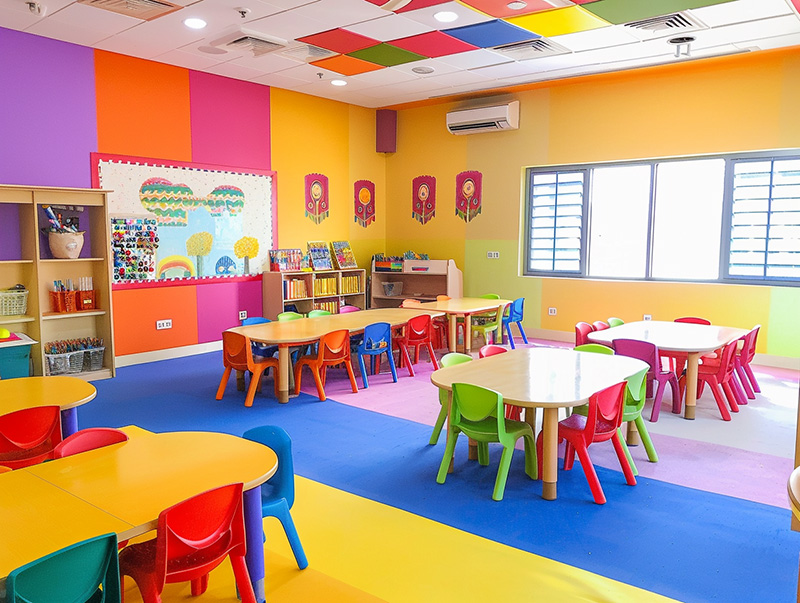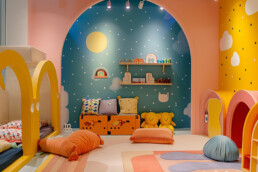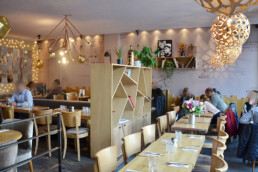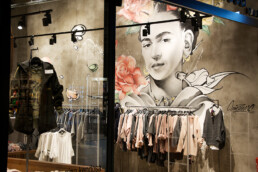What about starting this celebration of differences right from the early years? Nurseries in Dubai have been increasingly recognizing the importance of creating inclusive environments for children, where cultural diversity is not just acknowledged but celebrated. Imagine a space where little minds are nurtured amidst a tapestry of colors, patterns, and symbols that represent the rich cultural heritage of not just one, but many! As you step into these nurseries, you’re no longer just met with the usual ABCs and 123s on the walls; instead, you’re greeted by a melting pot of cultures, each corner telling a unique story. From Moroccan-inspired rugs to Indian elephant motifs, the decor transcends mere aesthetics – it becomes a powerful tool for shaping young minds. This blog post delves into the fascinating realm of nursery decor in Dubai, where every element is thoughtfully curated to weave a narrative of unity in diversity, laying the foundation for a generation that values inclusivity. Let’s explore how these spaces are not just decorating rooms but also decorating young hearts and minds with the beauty of cultural diversity.
 The Significance of Multicultural Wall Art in Nurseries
The Significance of Multicultural Wall Art in Nurseries
One of the key elements in nursery decor that reflects cultural diversity is the use of multicultural wall art. The walls of nurseries in Dubai are adorned with vibrant and meaningful artwork from different cultures around the world. These artworks serve as visual representations of various traditions, customs, and values, creating an immersive learning experience for young children.
For example, a nursery may have a mural depicting scenes from different countries, showcasing landmarks, traditional attire, and cultural festivities. This not only introduces children to different cultures but also sparks their curiosity and encourages them to learn more about the world around them. Multicultural wall art acts as a window to different cultures, fostering a sense of appreciation and respect for diversity.
In addition to murals, nurseries also incorporate framed prints or posters featuring famous artworks or photographs from diverse cultures. These visual stimuli engage children’s senses and stimulate their imagination. They provide opportunities for discussions about different cultures, promoting open-mindedness and empathy.
Embracing Cultural Fusion Through Design Elements
Nurseries in Dubai go beyond simply displaying multicultural wall art; they embrace cultural fusion through their design elements. This involves blending traditional motifs with contemporary aesthetics to create a harmonious environment that celebrates diversity.
For instance, nursery furniture may feature intricate carvings inspired by Middle Eastern architecture or African tribal patterns. The use of such design elements not only adds visual interest but also serves as a reminder of the rich cultural heritage that surrounds us.
Incorporating traditional textiles is another way nurseries embrace cultural fusion. Textiles like Persian rugs or African kente cloth are used as floor coverings or wall hangings, adding warmth and texture to the space while showcasing different weaving techniques and patterns from around the world.
Incorporating Traditional Textiles from Around the World
Traditional textiles play a significant role in nursery decor, as they bring a touch of authenticity and cultural richness to the space. Dubai nurseries often incorporate textiles from various countries, such as batik fabrics from Indonesia, ikat weaves from Uzbekistan, or handwoven tapestries from South America.
These textiles are not only visually appealing but also provide tactile experiences for children. They can be used as soft furnishings like cushions or blankets, creating cozy reading corners or nap areas. By surrounding children with these traditional textiles, nurseries create an immersive environment that stimulates their senses and fosters an appreciation for different cultures.
Celebrating Festivals and Holidays Through Decor
Nurseries in Dubai understand the importance of celebrating festivals and holidays from different cultures. They use decor to create a festive atmosphere that reflects the diversity of their student population.
During Diwali, the Hindu festival of lights, nurseries may decorate with colorful rangoli patterns and diyas (clay lamps). For Chinese New Year, red lanterns and paper cutouts adorn the walls. These decorations not only add visual appeal but also provide opportunities for learning about different traditions and customs.
By incorporating festival-themed decor, nurseries create a sense of excitement and anticipation among children. They learn about different cultural celebrations firsthand, promoting tolerance and understanding.
Symbolism in Nursery Decor: Teaching Values Through Visuals
Nursery decor in Dubai goes beyond aesthetics; it is also used as a tool to teach values through visuals. Symbols representing values like love, kindness, respect, and equality are strategically placed throughout the space.
For example, a nursery may have artwork depicting children of different ethnicities holding hands or sharing toys, symbolizing unity and inclusivity. Inspirational quotes about diversity and acceptance may be displayed prominently on the walls.
These visual cues serve as constant reminders of the values nurseries aim to instill in their students. They create a nurturing environment where children learn to appreciate and embrace differences, setting the foundation for a more inclusive society.
Creating Multilingual Learning Spaces
In Dubai nurseries, creating multilingual learning spaces is another way to reflect cultural diversity. Labels, signs, and educational materials are often displayed in multiple languages, catering to the diverse linguistic backgrounds of the students.
By incorporating different languages into the nursery environment, children are exposed to various cultures and languages from an early age. This not only enhances their language skills but also promotes cross-cultural communication and understanding.
Nurseries may also invite parents or community members to share stories or songs in different languages during special events or cultural celebrations. This interactive approach further reinforces the importance of cultural diversity and encourages children to embrace different languages as part of their everyday lives.
In conclusion, nurseries in Dubai recognize the significance of using decor to reflect cultural diversity and create inclusive environments. Through multicultural wall art, embracing cultural fusion through design elements, incorporating traditional textiles, celebrating festivals and holidays through decor, using symbolism in nursery decor, and creating multilingual learning spaces, these nurseries lay the foundation for a generation that values inclusivity. By immersing children in a tapestry of cultures from an early age, Dubai nurseries shape young minds that appreciate differences and foster a sense of unity in diversity.
Related Posts
17 mai 2023
Enhancing Dining Experiences: The Art of Wall Decoration in Dubai
In a highly competitive restaurant…
16 mai 2023
Transforming Dubai Boutiques: The Power of Artistic Wall Decoration
In the vibrant retail landscape of…





